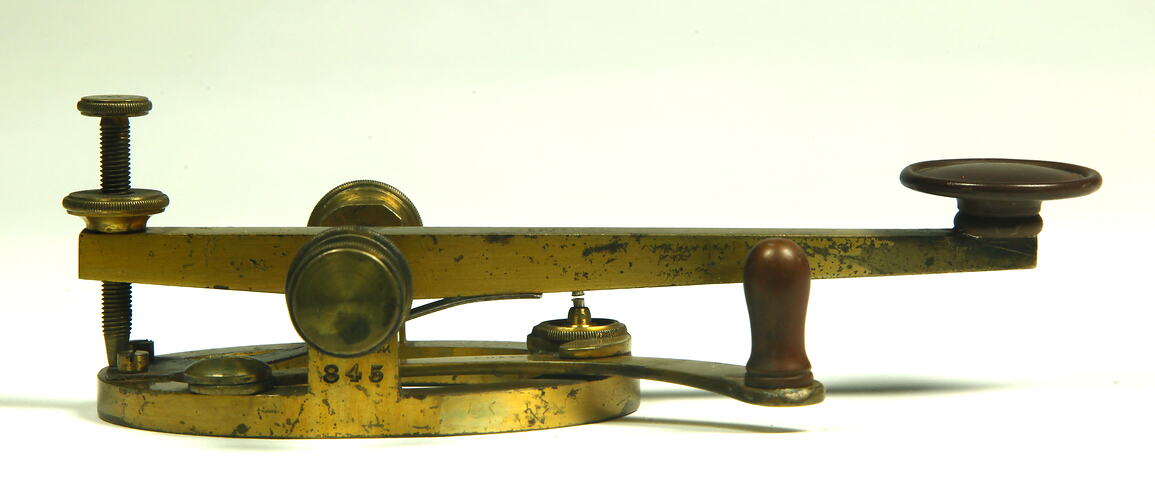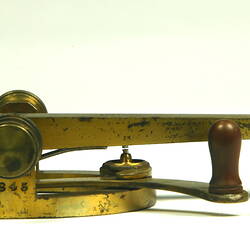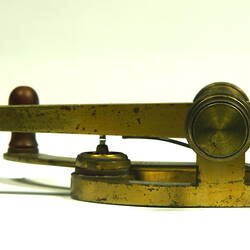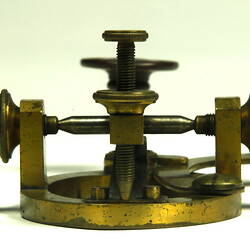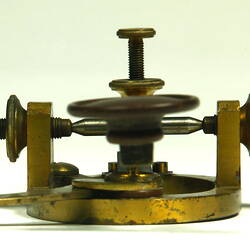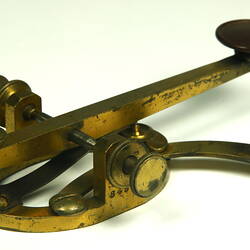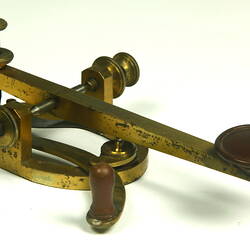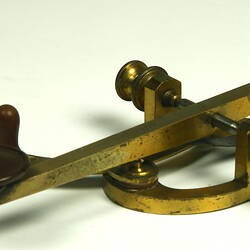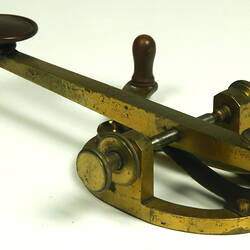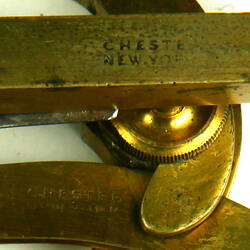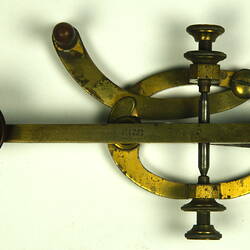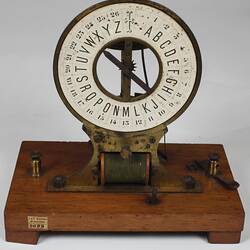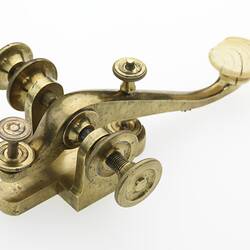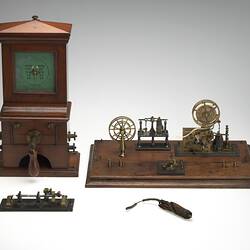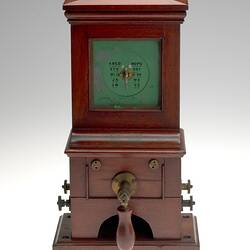Summary
Telegraph key used for the transmission of signals in the Morse electric telegraph system. Key was manufactured by Chester of New York.
To transmit signals the operator depressed a pivoted metal lever (the key) to complete an electric circuit and transmit current along the telegraph line. Releasing the key broke the circuit and cut off the current. Letters and numbers were represented by a sequence of short and long current pulses, transmitted according to a defined code. The most widely used code was generally known as "Morse code".
At the receiving end the sequence of current pulses could be displayed as long and short marks on a paper tape, or could be interpreted by an operator listening to the sounds made by the receiving instrument.
Physical Description
Oval brass base frame. Straight pivoted brass key fitted with ebonite finger pad. Curved pivoted circuit closing lever with ebonite knob attached to base.
More Information
-
Collection Names
-
Collecting Areas
-
Acquisition Information
Donation from (Estate of) Mr John J. Thompson, 27 Apr 1915
-
Manufacturer
Chester, New York, New York State, United States of America, 1855-1880
-
Collector
Mr John J. Thompson, 12 Rose Street, Armadale, Greater Melbourne, Victoria, Australia, 27 Apr 1915
-
Inscriptions
On top of brass key: CHESTE[R] / NEW YO[RK] On top of circuit closing lever: CHESTER / NEW YOR[K] On side: CHESTER / NEW YORK / 845
-
Classification
-
Category
-
Discipline
-
Type of item
-
Object Dimensions
82 mm (Width), 145 mm (Depth), 45 mm (Height)
-
Keywords
